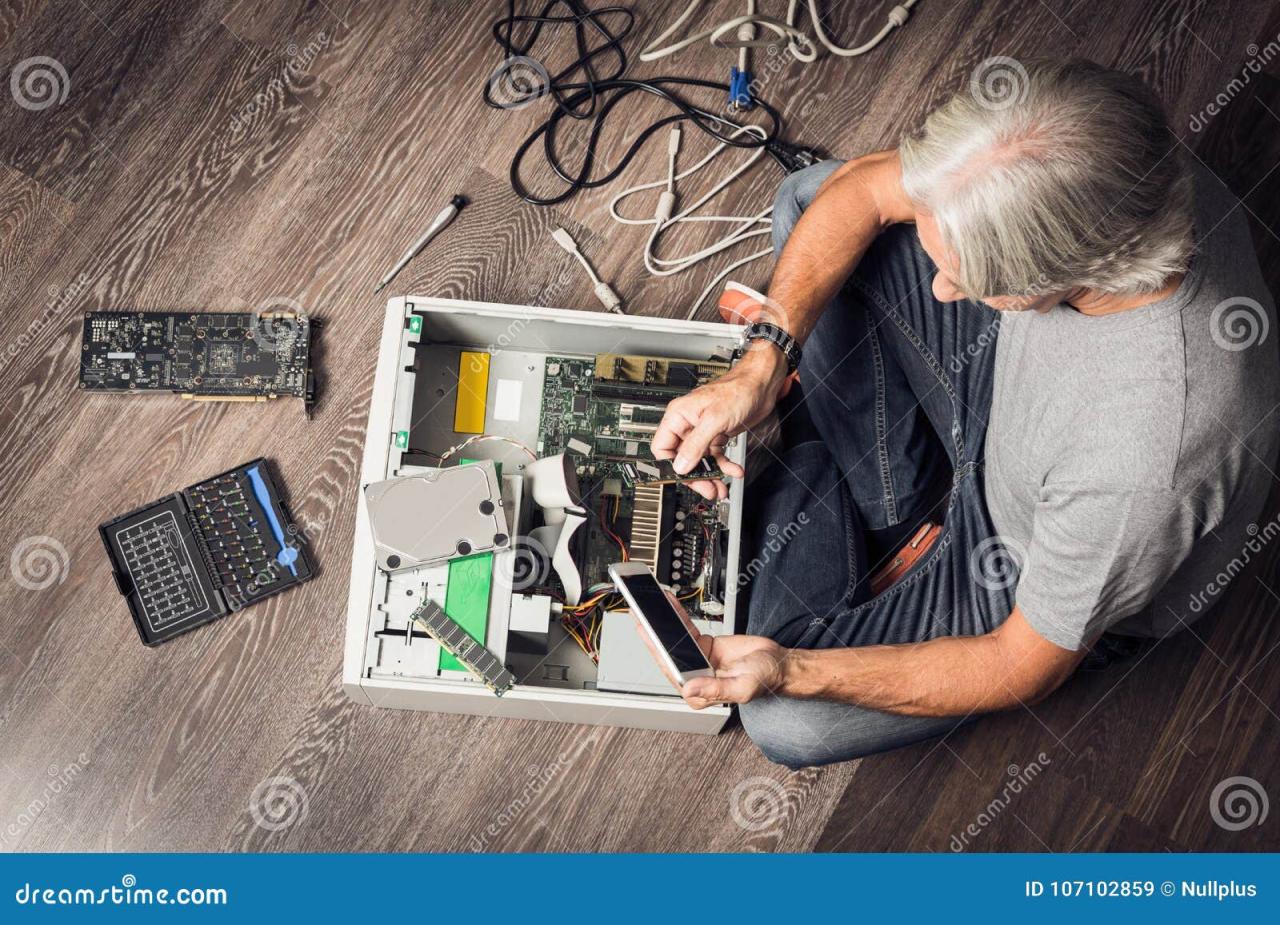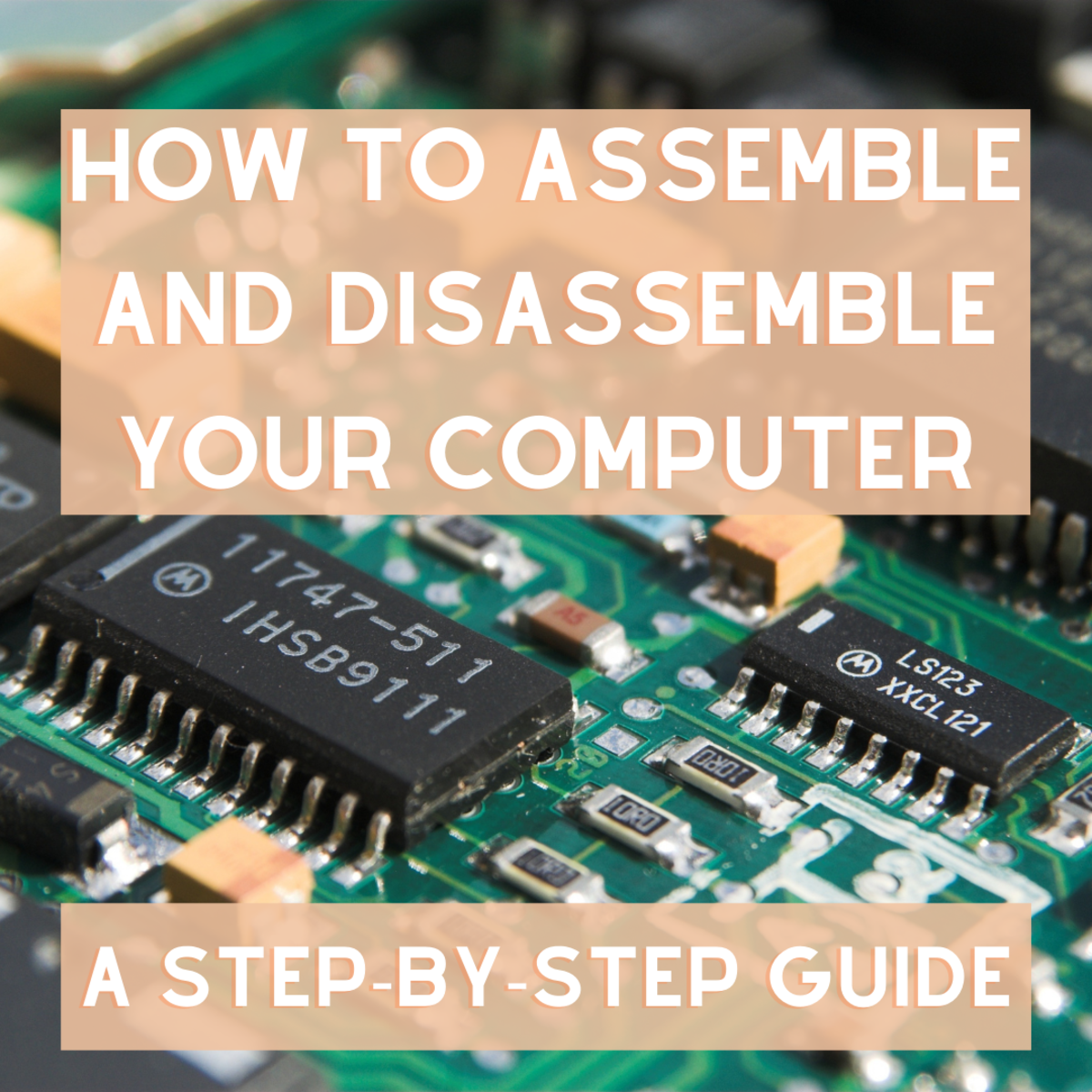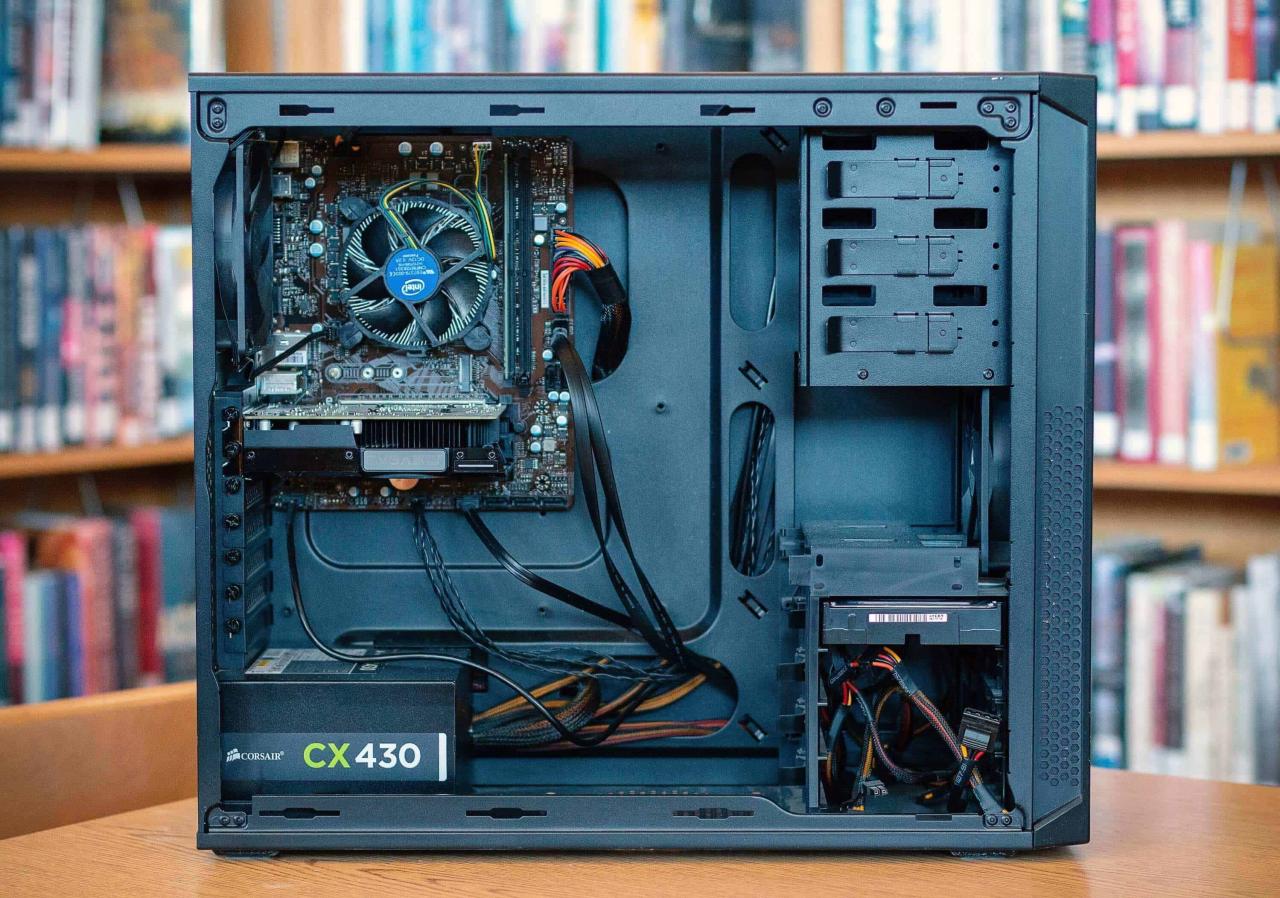PC Builder: Dive into the exciting world of crafting your own computer! Building a PC is more accessible than you think, offering a rewarding experience and complete control over your system’s performance and features. This guide walks you through each step, from selecting components to installing the operating system, ensuring you’re equipped to build the PC of your dreams, regardless of your budget.
We’ll cover everything from choosing the right CPU and motherboard to understanding power supply needs and optimizing cooling. We’ll also explore different storage options, essential peripherals, and advanced techniques like overclocking (if you’re feeling adventurous!). Whether you’re a complete beginner or looking to upgrade your skills, this comprehensive guide has you covered.
PC Building: A Step-by-Step Guide

Building your own PC can be a rewarding experience, offering a level of customization and control you won’t find with pre-built systems. This guide walks you through the entire process, from selecting components to troubleshooting potential issues.
Defining the PC Building Process

Building a PC involves a series of steps, from planning your build to installing the operating system. Careful planning and attention to detail are crucial for a successful build.
- Planning and Component Selection: Research and choose compatible components based on your budget and needs.
- Assembly: Carefully install components into the case, following manufacturer instructions.
- Operating System Installation: Install your chosen operating system (e.g., Windows, Linux).
- Testing and Troubleshooting: Thoroughly test the system and address any issues that arise.
Essential tools include a Phillips head screwdriver, anti-static wrist strap, and possibly zip ties for cable management.
Essential components for a basic PC build include a CPU, CPU cooler, motherboard, RAM, storage (SSD or HDD), power supply, and a case.
Installing an operating system typically involves creating a bootable USB drive with the OS installer, booting from the USB drive, and following the on-screen instructions.
Building your own PC can be a rewarding experience, letting you customize every aspect. But if you’re stuck on a component choice and need to check some specs, you might find yourself wondering, “is chatgpt down? ” because it’s a great resource for quick answers. Once you’ve got that sorted, you can get back to choosing the perfect CPU cooler for your build!
Component Selection and Compatibility
Choosing the right components is key to a well-performing and reliable PC. Compatibility is paramount; ensure all components are compatible with each other before purchasing.
Intel and AMD CPUs offer different architectures and performance characteristics. Intel CPUs are often known for their single-core performance, while AMD CPUs sometimes excel in multi-core performance. The best choice depends on your specific needs and budget.
Motherboard selection depends on CPU socket compatibility, desired features (like number of RAM slots or expansion slots), and form factor (ATX, micro-ATX, etc.).
RAM speed and capacity directly impact system performance. Faster RAM allows for quicker data access, leading to smoother multitasking and improved gaming performance. More RAM allows for running more applications simultaneously without performance slowdown.
Building a PC can be a rewarding experience, letting you customize every aspect of your machine. Think about the processing power needed to analyze data from sources like drone sightings around the world ; that kind of data crunching demands a serious setup. So, when planning your next PC build, consider the future applications you might need and choose components accordingly.
| GPU | Price Range | Gaming Performance (1080p) | Gaming Performance (1440p) |
|---|---|---|---|
| Budget-friendly GPU (e.g., GTX 1650) | $100-$200 | Good | Low |
| Mid-range GPU (e.g., RTX 3060) | $300-$400 | Excellent | Good |
| High-end GPU (e.g., RTX 4070) | $500+ | Exceptional | Excellent |
Power Supply and Cooling

A sufficient power supply is crucial for stability and longevity. Cooling is equally important to prevent overheating and system instability.
Wattage refers to the maximum power output of the PSU, while efficiency indicates how much power is actually delivered to the components versus lost as heat. A PSU with higher wattage and efficiency is generally preferred.
CPU coolers range from stock coolers (included with some CPUs) to air coolers and liquid coolers (AIO and custom loops). Air coolers are generally more affordable, while liquid coolers offer better cooling performance, especially for high-end CPUs.
Effective airflow management involves strategic placement of case fans to create a positive or negative pressure environment, ensuring proper cooling of all components.
- Regularly clean dust from components and fans.
- Monitor temperatures using system monitoring software.
- Ensure adequate airflow within the case.
Storage and Peripherals
Storage options and peripherals significantly influence the overall user experience.
SSDs offer significantly faster read and write speeds compared to HDDs, resulting in faster boot times and application loading. HDDs provide more storage capacity at a lower cost per gigabyte.
SATA and NVMe are different interfaces for connecting storage devices. NVMe offers significantly faster speeds than SATA, but is generally more expensive.
PC cases come in various sizes and form factors (ATX, micro-ATX, mini-ITX), each with its own features and compatibility considerations.
Building your own PC can be a rewarding experience, letting you customize every component. Before you dive into choosing your CPU and GPU, though, you might want to check if your research tools are working; check if is chatgpt down right now , as it can be a handy resource for specs and comparisons. Once you’ve confirmed that, you can get back to selecting the perfect motherboard for your build!
Essential peripherals include a keyboard, mouse, and monitor. Consider factors like keyboard type (mechanical, membrane), mouse sensor type (optical, laser), and monitor resolution, refresh rate, and size.
Budget PC Building, Pc builder

Building a budget PC doesn’t mean sacrificing performance entirely; careful component selection is key.
A budget build for everyday tasks might include a low-power CPU, integrated graphics, 8GB of RAM, and a small SSD. A mid-range gaming PC for 1080p gaming could incorporate a dedicated GPU, more RAM, and a faster processor.
Finding the best deals often involves comparing prices across multiple online retailers and taking advantage of sales and promotions. Component selection should prioritize performance within the set budget, potentially making trade-offs between components.
Advanced PC Building Techniques
Advanced techniques like overclocking and custom water cooling can improve performance, but require advanced knowledge and careful execution.
Overclocking involves increasing the clock speed of the CPU or GPU beyond its factory settings, potentially increasing performance but also generating more heat and requiring more effective cooling.
Custom water cooling loops offer superior cooling performance compared to air coolers or AIO liquid coolers but are complex to install and require specialized components.
Cable management is crucial for airflow and aesthetics. Properly routing and securing cables improves airflow and makes the PC look cleaner.
Troubleshooting common issues involves checking component connections, ensuring proper power supply, and using diagnostic tools.
PC Building Resources and Communities
Numerous resources are available to assist in PC building. Online communities and forums provide support and advice.
Reputable online retailers offer a wide selection of PC components at competitive prices. Online forums and communities offer valuable assistance, troubleshooting tips, and a sense of community among PC builders.
Understanding technical specifications is crucial for selecting compatible and appropriate components. Helpful tools and software include CPU-Z, GPU-Z, and various system monitoring utilities.
Closure
Building your own PC is a journey of learning and customization. From the initial thrill of selecting components to the satisfaction of booting up your self-built machine, the process is incredibly rewarding. This guide provides a solid foundation, empowering you to build a PC that perfectly matches your needs and budget. Remember to utilize online resources and communities for support; they are invaluable assets throughout your building journey.
Happy building!
Frequently Asked Questions: Pc Builder
What tools do I need to build a PC?
A Phillips head screwdriver, anti-static wrist strap, and possibly zip ties for cable management are essential. Additional tools might be helpful depending on your build, such as thermal paste applicators.
How often should I clean my PC?
At least every 3-6 months. Dust buildup can significantly impact performance and cooling.
What is the best operating system for gaming?
Windows is the most common and widely supported operating system for gaming.
Can I reuse parts from my old PC?
Potentially, but compatibility is key. Check compatibility charts to ensure your old parts work with your new components.
